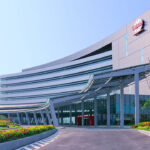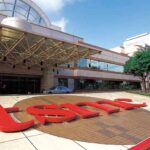ASIA ELECTRONICS INDUSTRYYOUR WINDOW TO SMART MANUFACTURING
TSMC Taps Ansys’ Unique Simulation in RF Chip Design
ANSYS Inc. collaborated with Taiwan Semiconductor Manufacturing Company Limited (TSMC) on the TSMC N6RF Design Reference Flow for TSMC’s N6 process technology. To illustrate, the Reference Flow uses the Ansys multiphysics simulation platform, including Ansys RaptorX, Ansys Exalto, Ansys VeloceRF, and Ansys Totem to provide a low-risk and proven solution for designing radio-frequency chips.
The TSMC N6RF Design Reference Flow provides RF designers with a workflow that accelerates design times. In addition, it also reduces wasteful over-design. Most importantly, it also enables higher performance and reliability for chips used in 5G radio communication, Wi-Fi connectivity, and IoT networks. Extending its support for advanced-node technologies, Ansys collaborated with TSMC to enhance both RaptorX and Ansys HFSS to accept TSMC’s encrypted technology files.

Benefit from Respective Technologies
Suk Lee, vice president of Design Infrastructure Management Division at TSMC noted wireless communications has become an integral part of many of today’s high-tech systems. “We’re working closely with our ecosystem partners to address this growing demand with a verified RF Design Reference Flow based on our N6RF process technology.”
Furthermore, Lee added popular design tools that will help mutual customers of both Ansys and TSMC can quickly launch their next generation silicon designs. Hence, benefiting from the power and performance boosts respective advanced technologies.
TSMC’s N6RF Design Reference Flow enables advanced design capabilities in the Ansys platform, including fast in-design analysis of electromagnetic coupling and the layout synthesis of coils, transmission lines, and other inductive circuit devices. In addition, it also supports circuit-under-inductor techniques that can significantly reduce the area and hence the cost of an RF design.
“Modern system design is increasing the scope of multiphysics effects that need to be considered to optimize power, performance, and area of almost every leading design project,” said John Lee, vice president and general manager of the semiconductor, electronics, and optics business unit at Ansys. Furthermore, he added the collaboration with TSMC makes it easier for joint customers to adopt Ansys’ advanced platform of solutions. Especially, for simulating and modeling electromagnetic interactions on integrated circuits manufactured by TSMC.




